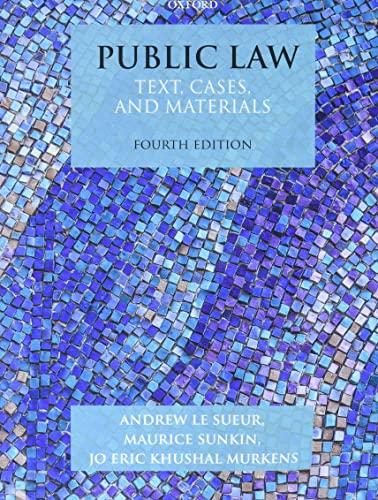Question
1. Evans v. Teamsters Local Union No. 31, 2008 SCC 20 (CanLII) Evans worked for the union in Whitehorse for 23 years. He was dismissed
1.Evans v. Teamsters Local Union No. 31,2008 SCC 20 (CanLII)
Evans worked for the union in Whitehorse for 23 years. He was dismissed by a letter faxed to him by the newly elected president. Evans offered to accept 24 months' notice: 12 months of employment, followed by 12 months' salary. Negotiations continued, during which Evans continued to be paid. Four months later the union asked Evans to return to his employment for the balance of the 24-month notice period. Evans refused and the union treated his refusal as just cause. The trial judge awarded Evans 22 months' pay for wrongful dismissal. The Court of Appeal set aside the award, ruling that Evans' refusal to accept the union's offer meant that he failed to mitigate his damages.
The Supreme Court found in favour of the union, holding that a dismissed employee may have to mitigate his damages by returning to work for the same employer. Is this fair to the employee? What factors should a court consider when deciding whether an employee should return to work for the employer who dismissed him?
2.Emerald Foods Ltd. (c.o.b. Bird's Hill Garden Market IGA) v. United Food and Commercial Workers' Union, Local 832,2003 MBCA 83 (CanLII)
In Manitoba, the employees of Emerald were in the process of applying for certification when, on the day before the certification vote was to be taken, the president of the company wrote a threatening letter to the employees, hinting that unionization would prevent the implementation of planned wage increases. Only 60 of the 83 employees voted, and they split 30/30 as to supporting certification. The union claimed that the letter intimidated the employees so that the vote actually taken wasn't a true reflection of the employees' feelings. The union made application to the Labour Board.
Indicate the arguments available to both sides, the likely outcome, and what the union could expect if it was successful. Note the restrictions put on an employer in the collective bargaining process and consider whether the statutes in place have allowed unions to become too powerful, placing unfair restrictions on the employers in dealings with such unionized employees.
Will their claim succeed? Or is this a matter dealing with the collective agreement, demanding that the grievance process be used and the matter arbitrated?
Step by Step Solution
There are 3 Steps involved in it
Step: 1

Get Instant Access to Expert-Tailored Solutions
See step-by-step solutions with expert insights and AI powered tools for academic success
Step: 2

Step: 3

Ace Your Homework with AI
Get the answers you need in no time with our AI-driven, step-by-step assistance
Get Started


